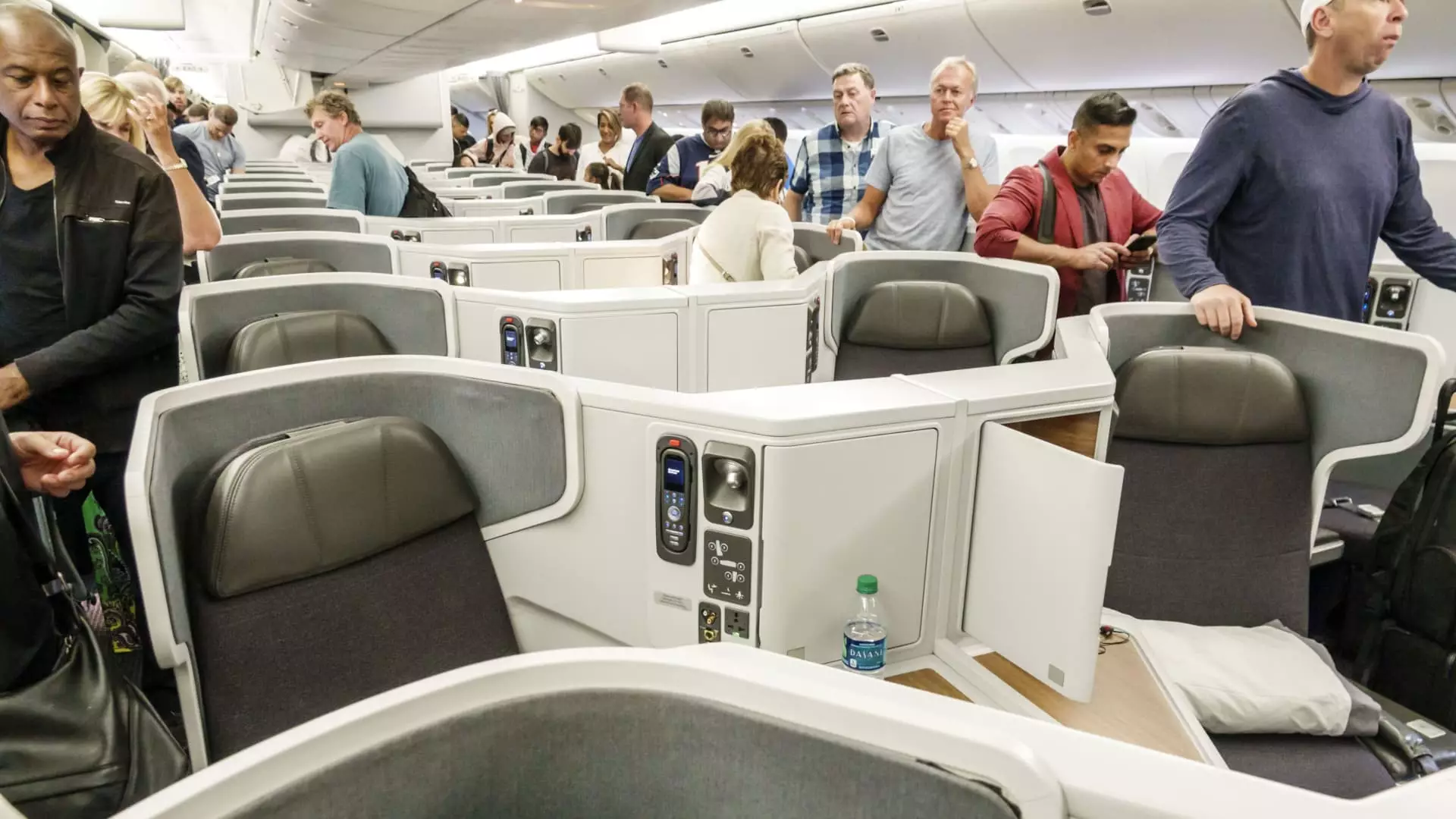The landscape of air travel has dramatically transformed in recent years, particularly as a response to consumer behavior changes catalyzed by the global pandemic. As travelers begin to return to the skies, the relentless pursuit of budget-friendly travel options is evolving into a yearning for enhanced comfort and exclusive experiences. This article delves into the growing preference for premium cabin seating, where demand rises while free upgrades become increasingly elusive.
Airlines are witnessing a distinct trend: consumers are increasingly willing to invest in premium seating. Where once cheaper options appealed to the majority of travelers, the pandemic has shifted mindsets, with many passengers now favoring relatively spacious seats in the front of the cabin. This sea change reflects a shift in priorities for many; comfort and space are now valued higher than merely saving a few dollars. The consequences are considerable—the competition for free upgrades and elite status among frequent flyers intensifies as a growing number of passengers seek to enjoy these prime locations in the airplane.
During peak travel periods like the holiday season, airlines anticipate unprecedented crowd volumes. This surge will further complicate the landscape for frequent flyers seeking to utilize their hard-earned benefits, including complimentary upgrades. The stark reality, as airlines like Delta Air Lines note, is that filling the premium sections of planes is not just a fleeting trend; it appears here to stay. Executives project solid demand even in typically slower seasons, with airlines like Delta boasting impressive unit revenues from both domestic and international routes.
The disparity in pricing between coach and premium classes can be staggering, varying based on multiple factors such as route distance, seasonal fluctuations, and even time of travel. A recent example highlighted the substantial price gap for a round-trip flight on United Airlines—$347 for standard economy versus $1,791 for Polaris Business class. Such differences incentivize the increasing number of travelers to consider the premium options more seriously.
In contrast with historic norms, where frequent flyers could accumulate upgrades through sheer miles flown, airlines are recalibrating their loyalty programs. The shift toward rewarding monetary expenditure rather than distance traveled underscores a broader strategy to increase revenue streams. For instance, forthcoming changes in 2025 will require travelers to spend more on various airlines to achieve or retain elite status. Figures indicate that the share of paid travelers in Delta’s domestic first class has skyrocketed from 12% to nearly 75% over the past 15 years, illustrating the industry’s pivot away from complimentary offerings.
Furthermore, as low-cost carriers begin to adopt premium options, the competitive landscape transforms significantly. Airlines like Frontier and Alaska are investing in roomier seats, no longer relegating the first-class experience solely to traditional, full-service carriers. The evolving nature of what constitutes ‘premium’ travel hints at a desire for additional comfort—even on routes where it was previously absent.
Enhancements to Cabin Experience
The increasing demand for economy class upgrades drives airlines to innovate. American Airlines recently introduced modifications to make upgrading to premium seats more seamless, focusing on post-purchase options to facilitate consumers’ desire for better cabin experiences. Other carriers are also investing heavily in retrofitting their fleets. For example, Delta plans to enhance its premium offerings, and both United and other competitors have taken similar steps in redeveloping their seating configurations to cater to this new reality.
With this pivot toward premium offerings, airlines are capitalizing on consumer sentiments—airline executives emphasize that the appetite for upscale amenities, larger personal spaces, and increased privacy will characterize the industry’s future. Passengers are hungry for quality over quantity, and airlines must respond accordingly.
Amid this competitive landscape lies the changing demographic of travelers. Many younger customers are more willing to spend on enhanced travel experiences over other products. This generational shift compels airlines that have traditionally focused on low-cost tickets to reconsider their service models. For instance, Southwest Airlines is introducing extra-legroom seats in 2026, which reflects an evolving consumer mindset even within a budget airline framework. Their assessment revealed consumer interest in more premium offerings, even as they opted against a traditional first-class setup due to potential losses in seat density.
The airline industry is undergoing a paradigm shift driven by an evolving passenger base and changing consumer preferences. Moving forward, airlines must navigate the challenge of balancing premium offerings with cost-effectiveness, ensuring they meet the demand for enhanced travel experiences while also maintaining profitability. As travelers look for more comfort, their willingness to pay a premium suggests the era of cheap seats may be giving way to a future where luxury takes flight.

